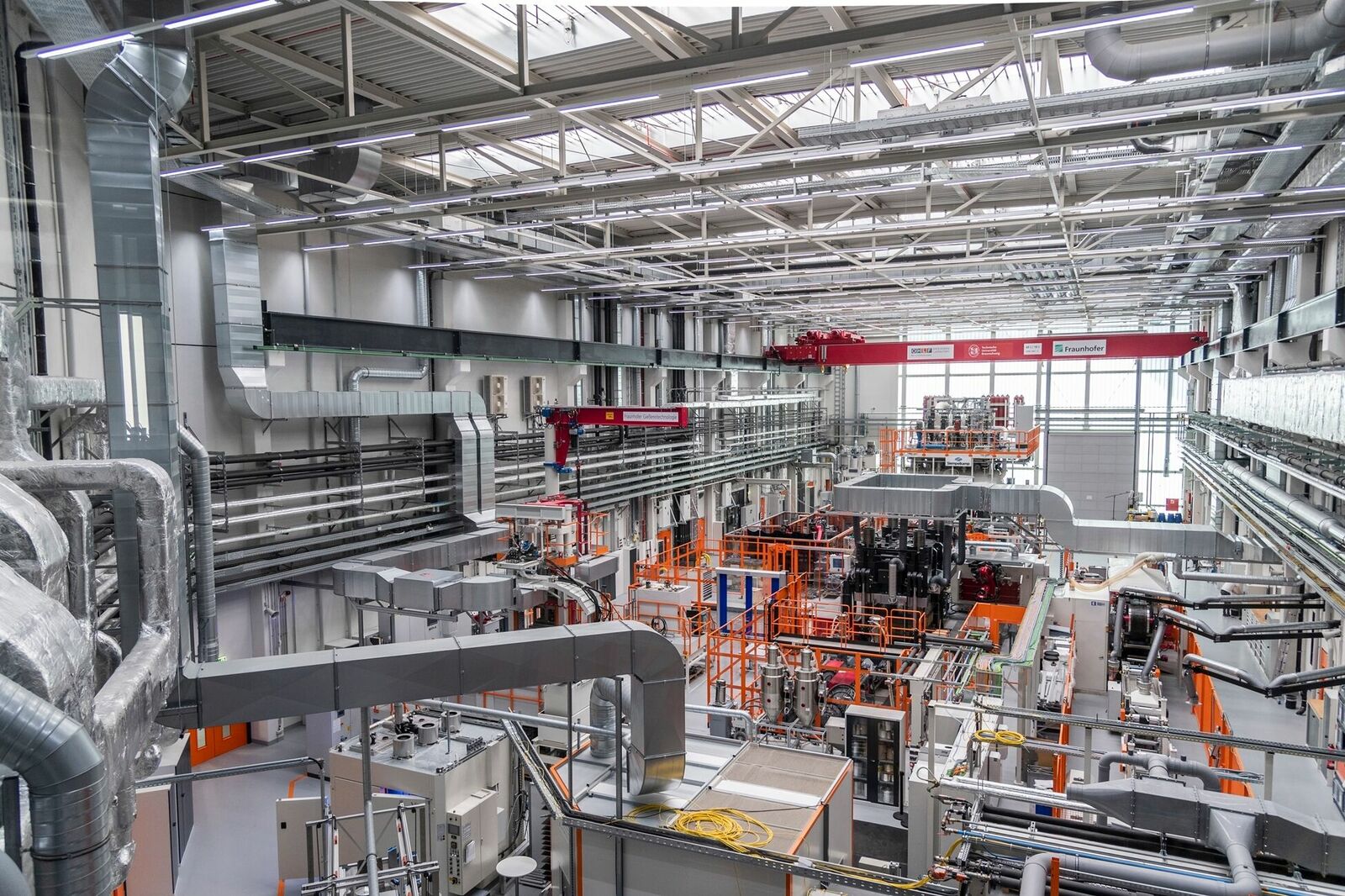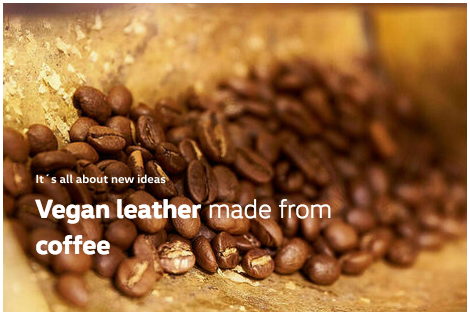
In a research association between science and companies, Volkswagen is working on the car materials of the future: Innovations based on cellulose and mushrooms (biological polymers) could soon replace leather, and help protect the climate. Here’s an insight into the basic research.
Stepping into the “Open Hybrid LabFactory” (OHLF) on the outskirts of Wolfsburg for the first time is a bit like an adventure trail in a computer game. At the heart of the research campus is the technical centre, a hall several stories high. Casting systems, injection moulding systems, compression technology and industrial robots set the tone. The materials of future cars are being researched in wire cages and glass cubicles – the goal being to make textiles, metals, plastics and composites even lighter and more sustainable, but just as stable as the materials of today.
The Open Hybrid LabFactory is representative of the public-private partnership model, meaning that higher education institutions and industrial enterprises work closely together here. Full members include the city of Wolfsburg, the Automotive Research Centre Niedersachsen (NFF), the Fraunhofer Society and the Technical University of Braunschweig. And on the industry side of things, many automotive industry suppliers and metal and plastic processing companies are involved in the research alongside Volkswagen.


The transformation of mobility is also changing the work being done at the research campus – initially the main focus was on lightweight construction, now the circular economy is becoming increasingly important. Dr. Marko Gernuks represents Volkswagen on the OHLF board of management. He says: “We want to design processes, materials and components in such a way that they make substantial improvements to the circular economy. With this in mind, we are planning to develop new plastics from recycled materials, we want to automate the dismantling processes so that it is economical to separate materials into single types, and we are opting for natural materials in organic cycles.”
“We want to design processes, materials and components in such a way that they make substantial improvements to the circular economy.” – Dr. Marko Gernuks, Head of Life Cycle Optimisation
Dr. Martina Gottschling of Volkswagen Group Innovation is also working in this innovative sphere. Her current main focus is on basic research for the next generation of leather substitutes, because Volkswagen has made a general decision to no longer use animal products for the all-electric ID. family. However, the demand for non-animal, high-quality alternatives to leather is rising in other model ranges as well. The reason being that the carbon footprint of leather is relatively high compared with other materials, since livestock farming must also be taken into account.
So, new technologies promise to greatly reduce the carbon footprint, and improve climate protection in the process.
Leather substitute made from pure cellulose

One approach that the Volkswagen researchers feel has huge potential is growing biomaterials. And industrial crops such as rapeseed and coniferous wood are by no means the only option. Biomaterials can also be produced in the lab. For example, Dr. Gottschling is currently researching pure cellulose that, in its natural state, is found in plant cell walls, in wood, for example. In the lab, it can be produced in a pure state using bacteria.
The natural polymer has many useful properties, such as being very stable and consistent. In a pure, non-hybrid form, it is also well suited to recycling processes and can be composted after use – another advantage.
So, will the seat covers of Volkswagen cars soon be made from lab-generated cellulose? “Cellulose has huge potential,” explained Martina Gottschling, listing a whole host of benefits. For example, at the OHLF, it is possible to cultivate pure cellulose in the desired forms. And the cultivation process is easy to scale, in vertical farming facilities, for example. As an entirely organic substance, pure cellulose is also perfectly suited to the biological circular economy. “In six to eight years, the material could be ready for its first use in cars,” estimates basic researcher Martina Gottschling.
Another research project that Volkswagen and businesses in the fashion industry, waste management and tanneries are involved in is looking into the possibilities of natural polymers based on fungal mycelium (the fungal network as a whole). The initial research in this area is also looking promising for the development of new, sustainable materials.
The long development cycles for innovative materials cannot be shortened in automotive construction. Volkswagen has high expectations for the sustainability of components and parts. “In the fashion industry, there aren’t as many requirements when it comes to durability and longevity, developments can be transferred to production more quickly there,” explains Martina Gottschling.
Overall, material development performs around 40 tests on new materials before they are released for series production in accordance with Volkswagen specifications. During these tests, they simulate every aspect of stresses and strains that seat covers, for example, are subject to in cars. There are specific tests for mechanical stresses, for ageing behaviour as a result of heat and UV radiation, and for soiling tendency, due to suntan lotion, for example.
Using a special device, Martina Gottschling demonstrates a test for determining abrasion resistance: The taut test material is put under strain by a circling stamp, while bullets sporadically press against the material from below. This process creates localised high material stresses. The stamp circles over the specimen several thousand times during the course of a day. The number of imperfections, meaning the parts with visible wear and tear, provides insight into the quality of the material. In a further test, the researchers test the tear resistance of new leather substitutes and compare them with the tear properties of the leather and artificial leather currently being used. The result must always prove that the new materials are in no way inferior to the conventional materials.

Experience for customers
New materials must not only achieve technological and ecological goals – they must also convey the feeling of high quality that customers expect from a Volkswagen. “That is our task in materials research: Every fabric that we use in the interior must also be an experience for customers,” says Martina Gottschling. And throughout the entire service life of the car. According to the researcher: “Only once that has been achieved, is a new material fit for purpose.”

Sugar and cellulose
Cellulose is an important raw material in materials research. The OHLF researchers feed bacteria in a sugar solution. They, in turn, generate pure-formcellulose. Once the growth process has ended, when the workpiece has reached the desired size, the researchers use washing processes to remove the bacteria and dry the sourced cellulose over several steps. This is followed by post-processing and drying, then the experts use an organic plasticiser to generate the desired smoothness of the material.
Source
Volkswagen, Shaping Mobility, press release, 2021-10-28.
Supplier
Fraunhofer-Gesellschaft
Technische Universität Braunschweig
Volkswagen AG
Share
Renewable Carbon News – Daily Newsletter
Subscribe to our daily email newsletter – the world's leading newsletter on renewable materials and chemicals












